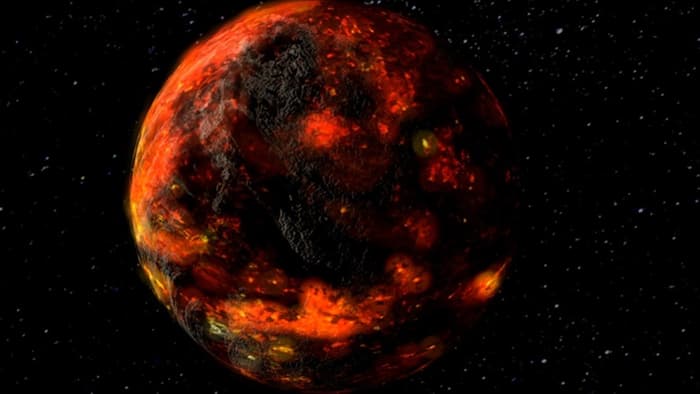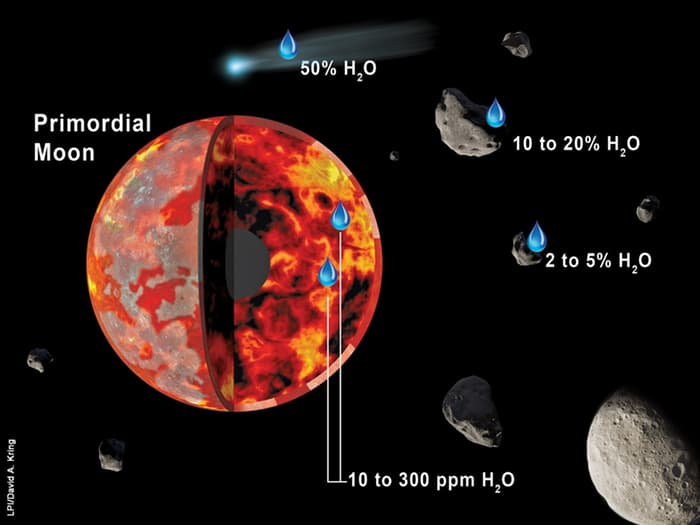For several years now, we’ve known that the Moon is not as dry as was assumed for decades, in fact our satellite is harboring a good amount of water. Now a team based at the Open University in the UK is painting a more detailed picture of exactly how that water was transported to the Moon and trapped on what seems like an outwardly arid rock.
Initial hypotheses assumed that comets were the most likely delivery source for the water found in the interior of the Moon and even near the surface of its soils, but scientists using data from recent unmanned lunar missions like the Lunar Reconnaissance Orbiter and Deep Impact more recently established that water-rich asteroids may have been responsible for most of the water in the Moon.
The mystery that has remained is when all the water in the Moon arrived there and how much came from asteroids versus comets.
A team led by Jessica Barnes at the Open University used numerical models and data from lunar samples used in previous studies to find that water was delivered to the Moon’s interior soon after its formation over a period of 10 to 200 million years.
The Moon is thought to have formed about 4.5 billion years ago after another planet-sized object collided with the Earth. In its early days, an ocean of magma was active on the Moon. Barnes and colleagues believe it is during this period that a class of asteroids known as carbonaceous chondrites rich in water delivered as much 80 percent of the Moon’s water, with comets making up most of the smaller portion of that total water budget.
The model Barnes’ team used describes comets and asteroids colliding with the Moon’s magma ocean and a thermal lid forming at the surface of that ocean to prevent the water within the visiting space rocks from being lost into space via degassing.
The results find that most of that water could be retained in the Moon’s interior until today and that most came from asteroids, although some may also be traced back to the primordial Earth itself and the initial impact that formed the Moon.
The results are published today in the journal Nature Communications.
Source: http://www.gizmag.com/
Dear User/Visitor! Please, answer on our questions: tick off one of the positions – your answer will make us able to improve our site and make it more interesting and useful!



